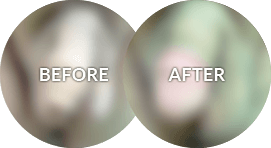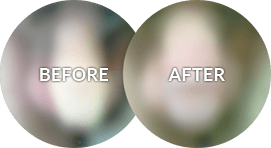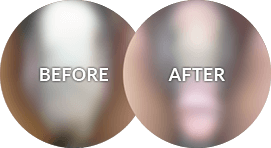
Intimacy should be celebrated, not feared. When you are ready to engage in consensual relations with another adult, you should take every precaution to keep one another healthy and safe. Knowing your STD status is essential to preventing disease transmission, but there may be additional ways to reduce your risk of contracting HIV and other infections.
Circumcision may be a supplemental method to decrease the spread of various sexually transmitted diseases. Contact California Adult Circumcision to discuss your wellness options and determine the healthiest path forward.
Contents
The Correlation Between HIV and Circumcision
The prepuce (foreskin) is a vulnerable area, susceptible to occasional pain and infection. In addition to the various complications that a tight foreskin presents, the tissue lining the inside of the prepuce is a magnet for additional issues. The inner wall of the foreskin prominently features many Langerhans’ cells.[1] The function of these specialized cells is a dynamic mix of defense and conduction. On the one hand, Langerhans’ cells contain receptors that bind with the HIV virus.[2] On the other hand, by essentially “trapping” HIV, Langerhans’ cells are the body’s first defense against its transmission.[3] To address the introduction of HIV into the foreskin, the body rushes a flood of T-cells to fend off the spread of HIV pathogens on an intracellular level.[4]
In other words: when HIV makes contact with the inner lining of the foreskin, the body works overtime to halt its full transmission. While this process is encouraging, it also leaves the rest of the body vulnerable to various infections. By removing the foreskin via adult circumcision, men may eliminate an avenue for HIV to affect their health.
Langerhans’ cells are not the only way for HIV to infiltrate the foreskin. The thin prepuce may suffer small tears or fissures during intercourse. These injuries may be too small to see or even feel, but they provide an entry point for HIV into the body. When fissures come into contact with vaginal or anal secretions, it increases the likelihood for the transmission of sexually transmitted diseases, including HIV.
Does Circumcision Reduce the Risk of STDs?
To learn more about the benefits of adult circumcision, contact Dr. Bidair and his associates at your earliest convenience.
Studies indicate that circumcision has a statistical correlation with the reduction of gonorrhea and syphilis transmission rates in America.[5] Make no mistake: condoms are a preferential way to prevent the spread of sexually transmitted infections, but the data regarding circumcision provides us an important perspective on the subject matter.
HPV and Circumcision
Not only can circumcision help protect men from contracting certain sexually transmitted diseases, but it may also shield their partners from infection. A prominent 2009 study published in the New England Journal of Medicine indicates a significant reduction in the risk of genital herpes and human papillomavirus (HPV) in circumcised males.[6] When men contract HPV, it increases their risk of developing genital warts and passing infections on to their sexual partners. While circumcision is not a cure-all remedy for STDs, by any means, it may greatly decrease a man’s risk of contracting certain diseases.
Benefits of Circumcision
In addition to the healthcare benefits of circumcision in the realm of disease mitigation and prevention, there are also aesthetic perks to the procedure. Dr. Bidair is a board-certified physician with unparalleled expertise in the fields of urology and cosmetic surgery. His résumé makes him uniquely qualified to deliver a bevy of benefits to patients who want to look and feel their best.
Benefits of Adult Circumcision
- Ease the tension of an overly tight foreskin
- Have a voice in the contours of your penis that best reflect your ideal self
- Facilitate better hygiene in the genital area
- Eliminate insecurities you may have regarding sexual intimacy
Eligible Candidates
If you are a man who lives in the San Diego vicinity, or if you are planning a stay in La Mesa, California, then you should consider visiting our clinic. Dr. Bidair can determine your eligibility for adult circumcision and discuss how the procedure relates to HIV and other sexually transmitted diseases. Please call (619) 486-5005 to schedule a consultation, or contact us online.
Personal Consultation in La Mesa, California
A meeting with Dr. Bidair is an appointment with excellence. During your individual consultation, you are encouraged to share your medical history and future wellness goals. If you are concerned about STDs and curious about the benefits of adult circumcision, you can speak freely with Dr. Bidair.
We also provide virtual consultations for patients who wish to discuss their health and wellness but cannot physically visit our office. No matter where you are located, Dr. Bidair wants to help you achieve your best self.
Preparation and Procedures
During your consultation, the staff at California Adult Circumcision will provide you with comprehensive instructions on how to prepare for your procedure. These are tailored to your anatomy and medical history. Please follow Dr. Bidair’s recommendations closely and arrange for a loved one to drive you to the clinic on the day of your surgery.
The specific nature of your circumcision procedure will vary depending on your foreskin. If it is tight against the corona (head) of your penis, then a dorsal-slit surgical technique will most likely be the optimal method of circumcision for you. After you receive the proper anesthesia, Dr. Bidair will gently and skillfully create a small incision along the top of the foreskin. This releases the tension and allows the doctor to retract the foreskin. Dr. Bidair then removes any excess skin and sutures the incision back together.
If your foreskin is loose, on the other hand, then a sleeve method of circumcision may be the preferable remedy. After making a circumferential marking around the foreskin, Dr. Bidair will make an incision accordingly. He then sutures the area closed, like hemming the cuff of a sleeve evenly around its entirety.
Dr. Bidair usually spends between 60 and 90 minutes on an average circumcision procedure. This is approximately double the time that other surgeons may dedicate to the surgery, because Dr. Bidair is not merely performing a functional procedure. He is providing a cosmetic service to reflect your ideal contours.
Healthy Recovery
As this article has illustrated, there is compelling evidence to suggest that circumcision helps reduce the risk of sexually transmitted disease transmission. Do not, however, rush into an intimate situation in the two to four weeks following your circumcision procedure. Please allow yourself sufficient time to heal.
Dr. Bidair uses dissolvable sutures, so there is no need for a follow-up visit to have them removed. Most patients can return to work within a week, but results vary from person to person. You should wear supportive undergarments and keep the area clean and free from irritation. Please contact our office if you have any questions or concerns about the circumcision recovery process.
Results and Statistics
According to the World Health Organization (WHO), circumcision reduced the risk of HIV transmission to heterosexual males by as much as 60%.[7] While circumcision is by no means a substitute for safe sex, it may offer a supplemental defense against the virus entering the body via the foreskin.
Please visit our reviews page to see how overwhelmingly satisfied Dr. Bidair’s clientele has been.
Health and wellness go hand in hand. In addition to the statistics listed above, circumcision provides men the chance to alter the look and feel of their penis to their specifications. Dr. Bidair is proud to work with his patients to deliver aesthetic results that reflect their tastes and style.
FAQ
How much does circumcision cost in San Diego?
Healthcare should never be cost-prohibitive. Dr. Bidair prides himself on providing the best wellness options for the right price. To discuss your needs and budgetary concerns, please call (619) 486-5005 and one of our attentive staff members will help you.
Does circumcision prevent HIV?
Safe sex and abstinence are the best ways to prevent the spread of HIV. Circumcision can reduce the risk of transmission in males by eliminating the vulnerable cells lining the foreskin. To learn more about the health and aesthetic benefits of adult circumcision, please contact our office in La Mesa, California.
References
- Szabo, R., Short, R.V. (2000). How does male circumcision protect against HIV infection? British Medical Journal. 320 :1592. doi: https://doi.org/10.1136/bmj.320.7249.1592
- Williams R. (2007). Langerhans cells limit HIV invasion. The Journal of Cell Biology, 177(1), 5. https://doi.org/10.1083/jcb.1771rr5
- Zhou, Z., Barry de Longchamps, N., Schmitt, A., Zerbib, M., Vacher-Lavenu, M. C., Bomsel, M., & Ganor, Y. (2011). HIV-1 efficient entry in inner foreskin is mediated by elevated CCL5/RANTES that recruits T cells and fuels conjugate formation with Langerhans cells. PLoS pathogens, 7(6), e1002100. https://doi.org/10.1371/journal.ppat.1002100
- Walker, B., & McMichael, A. (2012). The T-cell response to HIV. Cold Spring Harbor perspectives in medicine, 2(11), a007054. https://doi.org/10.1101/cshperspect.a007054
- Diseker RA, Peterman TA, Kamb ML, et al. Circumcision and STD in the United States: cross sectional and cohort analyses. Sexually Transmitted Infections 2000;76:474-479. http://dx.doi.org/10.1136/sti.76.6.474
- A.A.R Tobian et al. (2009). Male circumcision for the prevention of HSV-2 and HPV infections and syphilis. New England Journal of Medicine. DOI: 10.1056/NEJMoa0802556
- World Health Organization statistics, retrieved from: https://www.who.int/hiv/topics/malecircumcision/en/




